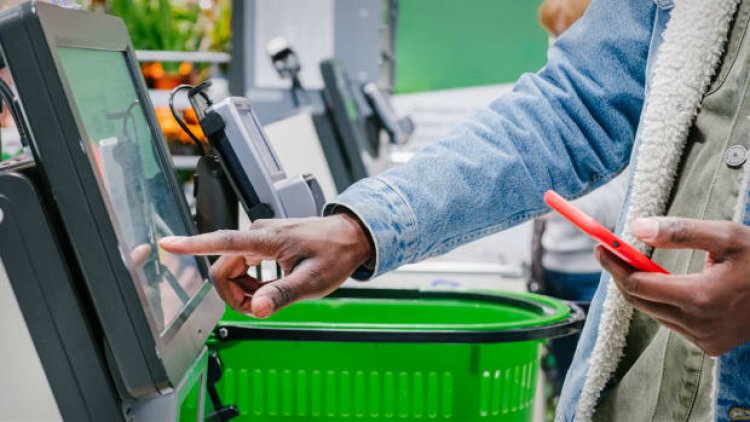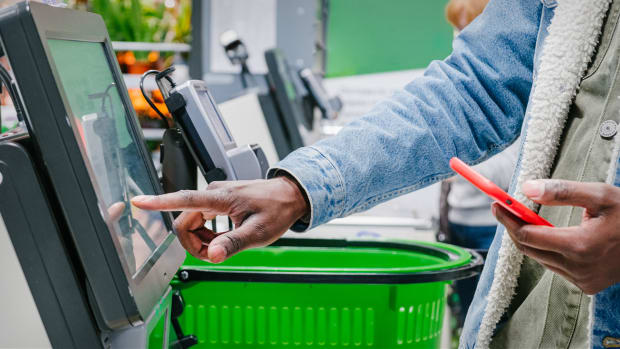Walmart, Kroger, Amazon and Grocery Stores Have a Problem Bigger Than Inflation
Higher prices are an issue, but they're not the biggest problem facing America's largest supermarkets.

Higher prices are an issue, but they're not the biggest problem facing America's largest supermarkets.
You can't turn on the news or look at any newsy area of the internet without hearing about inflation at the grocery store.
For a while, the narrative focused on the rising price of meat, and at various times the focus has been on staples like milk, paper towels, butter and other basics.
In recent weeks, the focus has been on eggs, where prices have actually skyrocketed, more than doubling to $4.25 a dozen in December 2022 from $1.72 in late 2020. That's a real case where the price of a commodity has sharply jumped.
DON'T MISS: Yes, Eggs Are Expensive. Here's Why and When Egg Prices May Come Down
Rising prices, both real and the public perception of them, could be bad news for traditional grocery chains including Kroger (KR) - Get Free Report, Walmart (WMT) - Get Free Report, and Amazon (AMZN) - Get Free Report.
Consumers aren't statisticians. They're not doing a scientific study when they decide where to buy groceries.
Instead, they're using their perceptions to make decisions, and that could push them away from supermarkets (Kroger and Walmart among them) to dollar stores. Getty Images
Grocery Prices Aren't as High as You Think They Are
While prices have gone up, consumers believe that inflation is much higher than it actually is. They also have a second incorrect belief about grocery stores that may drive their decisions about where to shop, according to the latest dunnhumby Consumer Trends Tracker:
"Americans believe that grocery retailers are earning a 35.2% net profit margin, 14 times higher than grocers’ actual net profit margin average of 2.5%, and that food-at-home inflation is 24.3%, double the annual rate reported by the U.S. Bureau of Labor Statistics."
Basically, people think grocery chains are making big money on their backs at a time when they should be helping keep rising prices in check.
“In this latest wave of our CTT study, we found that retailers are in a precarious position with their brand perception, since customers are vastly overestimating grocers’ store profit margins and inflation rates, while they themselves are battling food prices,” said Matt O’Grady, dunnhumby's president of the Americas.
“Retailers need to show they are empathetic to customers through their prices, their rewards/loyalty offers, and with messaging to best support shoppers during these challenging financial times.”
Why This Is a Big Problem for Walmart, Kroger, and Amazon
When it comes to inflation, perception has become reality for many consumers. This is affecting not only Walmart, Kroger and Amazon; it's also hurting regional grocery chains like Publix and Market Basket.
The problem, at least for big retailers, is that consumers do have choices and they're exercising those options.
“As the cost of everyday goods continues to rise, consumers are shopping around to find value,” Numerator CEO Eric Belcher said in a news release. “Many of these shifts, including high-income households trading down to dollar stores, are unexpected.”
That's a phenomenon that Dollar General (DG) - Get Free Report CEO Jeff Owen talked about during the chain's third-quarter-earnings call.
"Customers also continued to shift spending to more affordable options, such as items that are dollar price point and private brands, while also shopping closer to payday at the first of the month," he said.
"Importantly, we are growing more productive with our core customer, as well as seeing an increase in customers with annual household incomes up to $100,000."
Dollar General, which is a discounter, not a dollar store, reported an 11.1% increase in same-store sales during the past quarter. Owen says that his company can continue to take share from traditional grocery chains.
"This growth underscores our belief that our value and convenience proposition resonates with a broad spectrum of customers and will continue to be important to all customers in this challenging economic environment," he added.
"In turn, we remain focused on delivering value and convenience and continue to feel good about our pricing position relative to competitors and other classes of trade."
What's Your Reaction?

























































